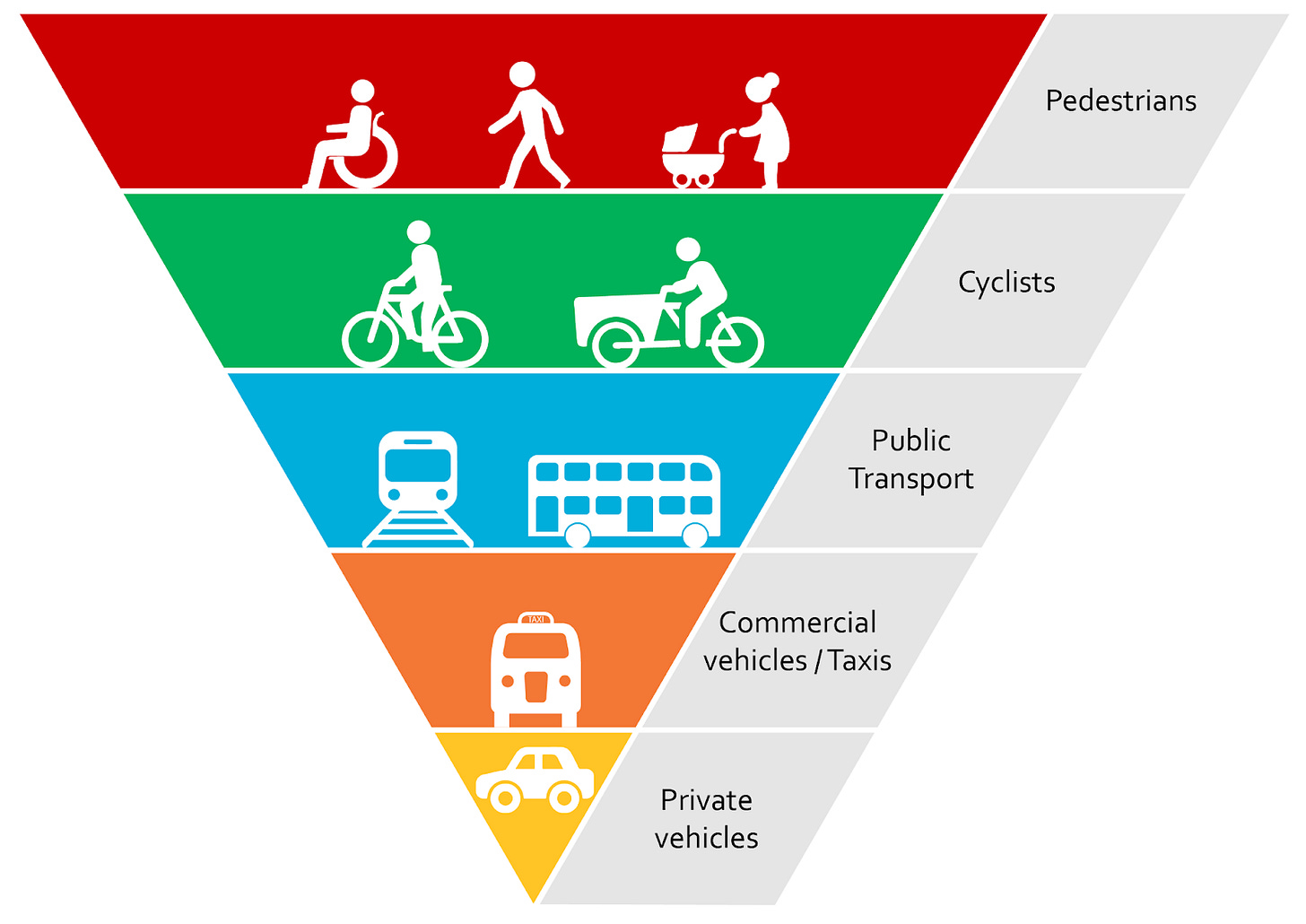Reform, Repair, Reopen
Reform's accidental active travel plan + a cycleway dusted off after four years’ closure.
Warwickshire County Council’s Reform leader wants more children to walk five miles to school (and no, it’s not because he’s a big active travel advocate). Meanwhile, we’ve a fancy new bridge, an end to a long-running bike route closure and instructions on how to repair villages broken in half by busy roads. Oh, and there’s a big new government cycling strategy out for consultation. Cycle this way.
BIG STORIES FOR CYCLING ADVOCACY
REFORM: ACCIDENTALLY BIG ON ACTIVE TRAVEL. OK so it’s a ludicrous idea, forcing children aged eight and under to walk five miles to school, some potentially along unlit 60mph country lanes with no pavements, but Reform’s alternative to school transport subsidies is an active travel one. Discovering how much bus and taxi fare subsidies cost the council, Warwickshire’s Reform administration proposed lifting the minimum distance cap for assistance somewhere above five miles, suggesting the children could walk instead.
Of course, if Britain had invested in safe active travel infrastructure, it might not be such a preposterous idea. It would need safe cycle lanes and 20mph zones, but of course, Reform are against those as well.
REPAIRING VILLAGES “SLICED IN TWO” BY ROADS. The latest report from Create Streets takes aim at the problem of rural communities cut in half by A-roads. A Road Between Us, authored by Nicholas Boys-Smith, finds such roads give drivers mixed messages: the road layout tells drivers to go fast, superseding any signage instructions to slow down. Among Boys-Smith’s solutions are narrowing the road, planting trees and bollards nearby, continuous crossing at side roads and raised tables for crossings.
10-YEAR CYCLING VISION LAUNCHES. The government has finally published for consultation its long-awaited Cycling and Walking Investment Strategy 3 (CWIS3). The vision is for walking, wheeling and cycling to be a safe, easy and accessible option for everyone by 2035. The objectives are to ensure people are safe to travel actively and that it feels an easy choice. The plan is to increase physical activity levels and active travel stages by 2030, as well as school trips, while reducing cycling and walking road deaths. A ten-year strategy is a positive, and the next wave of mayoral authorities will help deliver its goals but, as Transport Action Network points out, without extra funding we risk missing those goals.
LET’S MOVE! Kids need a lot of movement in their lives - and in the UK more than half don’t get enough of it. The NHS recommends an hour’s physical activity daily, half of that outside of school hours. Winter is notoriously when we retreat indoors, and new research shows nearly three in five parents expect children’s physical activity to drop in the dark months. A new government campaign, ‘Let’s Move!’ is aimed at keeping kids active, with ideas and events to get involved in. Another way of building activity into children’s days of course is enabling them to walk, wheel and cycle to school.
SEPARATE CYCLE ROUTES ARE POPULAR. That’s the conclusion of a study by the University of the West of England (UWE). Whether people saw the purpose of streets as places or travel corridors, transport professionals and road users were strongly in favour of separating pedestrians, cyclists and drivers. Respondents said such measures would help them use that street or route. Shared spaces were considered intimidating, while low traffic speeds and more direct walking and cycling routes were seen as positive. Policymakers, the researchers concluded, often misunderstand public opinion on this topic, and can take note.
OTHER HEADLINES
OPENING AND REOPENING. In local news, Sunderland got a massive new £31m walking and cycling bridge linking its stadium to Keel Square, the city’s big pedestrian area. Football fans can now walk from the train, across the river Wear on this wide, traffic-free bridge to the riverside and Sheepfolds area. Meanwhile, in Bristol, long-suffering residents finally have a date for the Concorde Way’s reopening - four years after it closed, ostensibly for six months. Delays to a development by Legal & General in the north of the city has caused consternation among the route’s 1,000 daily commuters, and anyone else wanting to use it. It will finally open in April or May 2026.
INTERESTING GRAPH OF THE WEEK:
This is a street design code, intended for Surrey council but useful for other locations. It can even be adapted for places with a big road running through the middle. Source: https://www.createstreets.com/projects/healthy-streets-for-surrey-street-design-guide/
ACTIVE TRAVEL WORD OF THE WEEK:
Highway Half: A term for a settlement cut in half by a busy road. There are various ways to improve their lot, if not repair them, as Create Streets suggests.
Until next time,
Adam
Adam Tranter
CEO, Fusion & Founder, #BikeIsBest
This newsletter is brought to you by Fusion, the agency for movers, specialising in communications and public affairs for active travel and mobility.






